Learn how to remove those gross tea and coffee stains from your mugs with this one simple tip. It only takes a few minutes and your mugs will look brand new again!
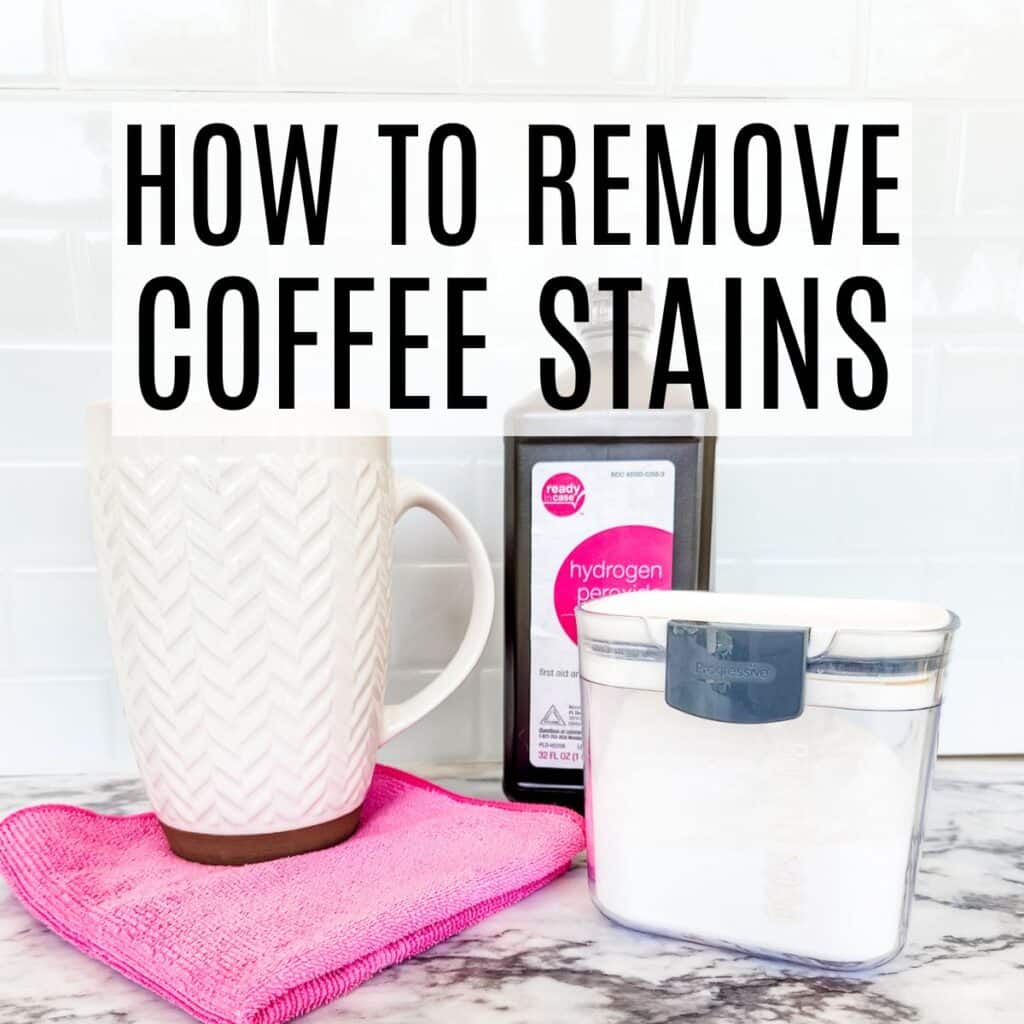
A couple of years ago, I bought my husband a coffee cup for Christmas to keep at work. It's a cute coffee cup, but for some reason, it really seems to attract coffee stains. I am not sure whether it's because it only gets rinsed out most times or because it's not dishwasher safe.
Either way, it bugs me that there are stains, so whenever he brings it home for me to clean it I try to spend a few extra minutes getting the stains out.

Free Weekly Cleaning Printable
Clean your home in under 30 minutes a day with this free Weekly Cleaning printable!
I don't like to use harsh chemicals like bleach or denture cleaners (Gross!). I know they are meant for your teeth, but using denture cleaners in a coffee cup just grosses me out.
If you have a coffee mug with tea or coffee stains this simple tip to remove coffee stains from mugs will get the stains gone without a lot of scrubbing and only uses two simple products.
Table of contents

What You'll Need
- Baking soda and hydrogen peroxide - these are the two ingredients that we are going to mix to make our natural cleaner to cut through those stains.
- Paper towel or sponge - to wipe the inside of the mug out. Or you can use these microfiber cloths that I love!
Be sure to check out these tricks for hydrogen peroxide that will change your cleaning habits. It's full of ways to use this common household products in place of toxic cleaners.
How to Clean Coffee Stains From Mugs
We use this method with most of our regular coffee mugs. See how we clean our Yeti cups and Stanley tumblers!
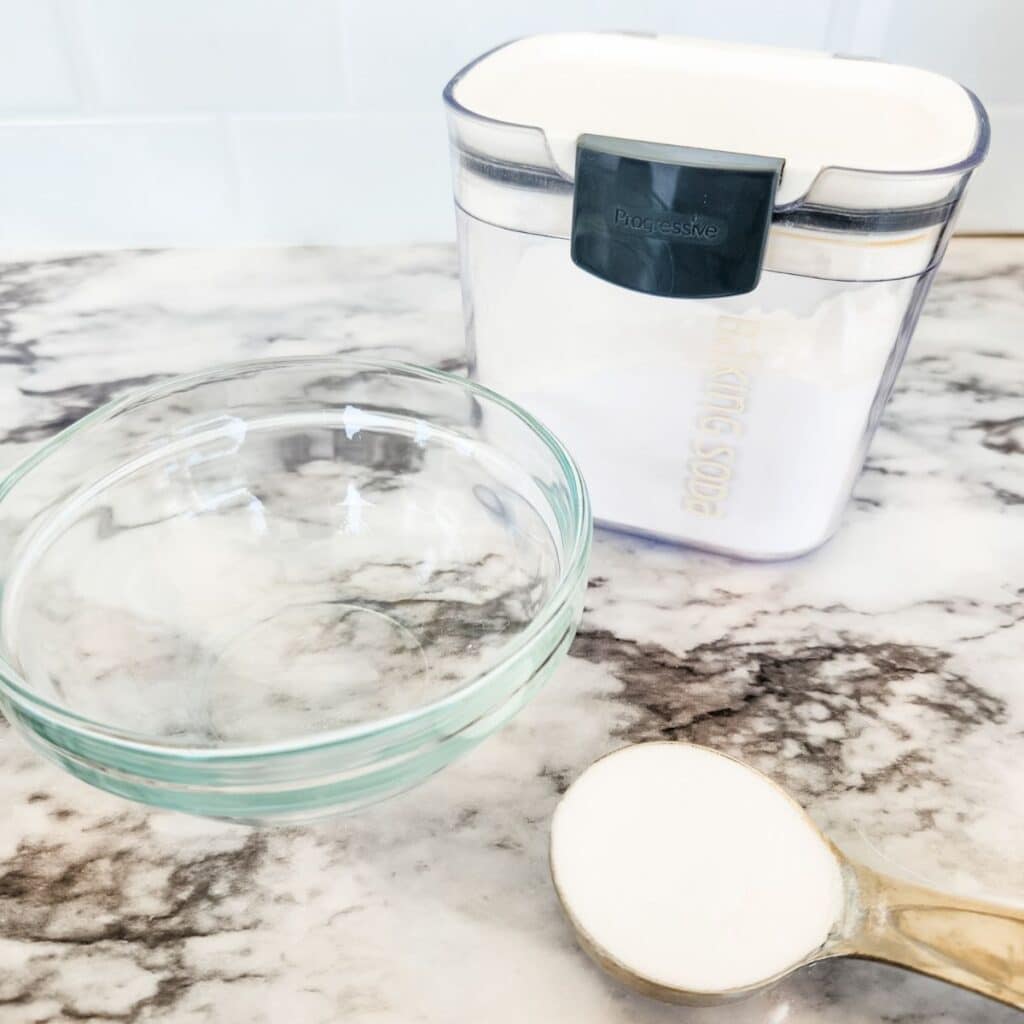
Make a paste.
Start by pouring about 1 tablespoon of baking soda in the stained coffee cup. Then slowly add enough hydrogen peroxide to the cup to make a paste.
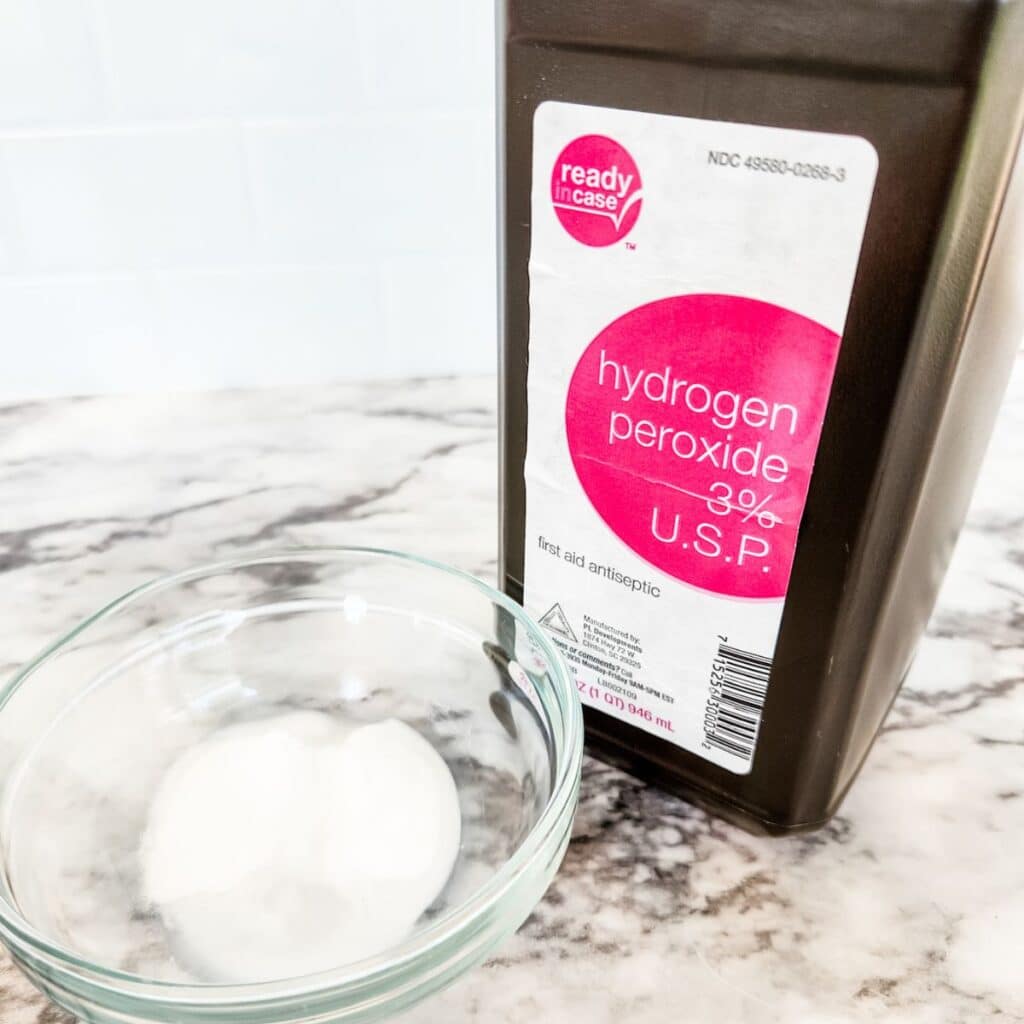
I use the handle of a spoon to really mix the baking soda/hydrogen peroxide mixture. You may need to add a little more baking soda. The paste should be thick enough that it can cling to the walls of the mug.
Coat the inside of the mug.
Once you have a thick paste coat all the places on the mug that has coffee or tea stains. Then, set the cup aside and let the paste sit for about 10 minutes.
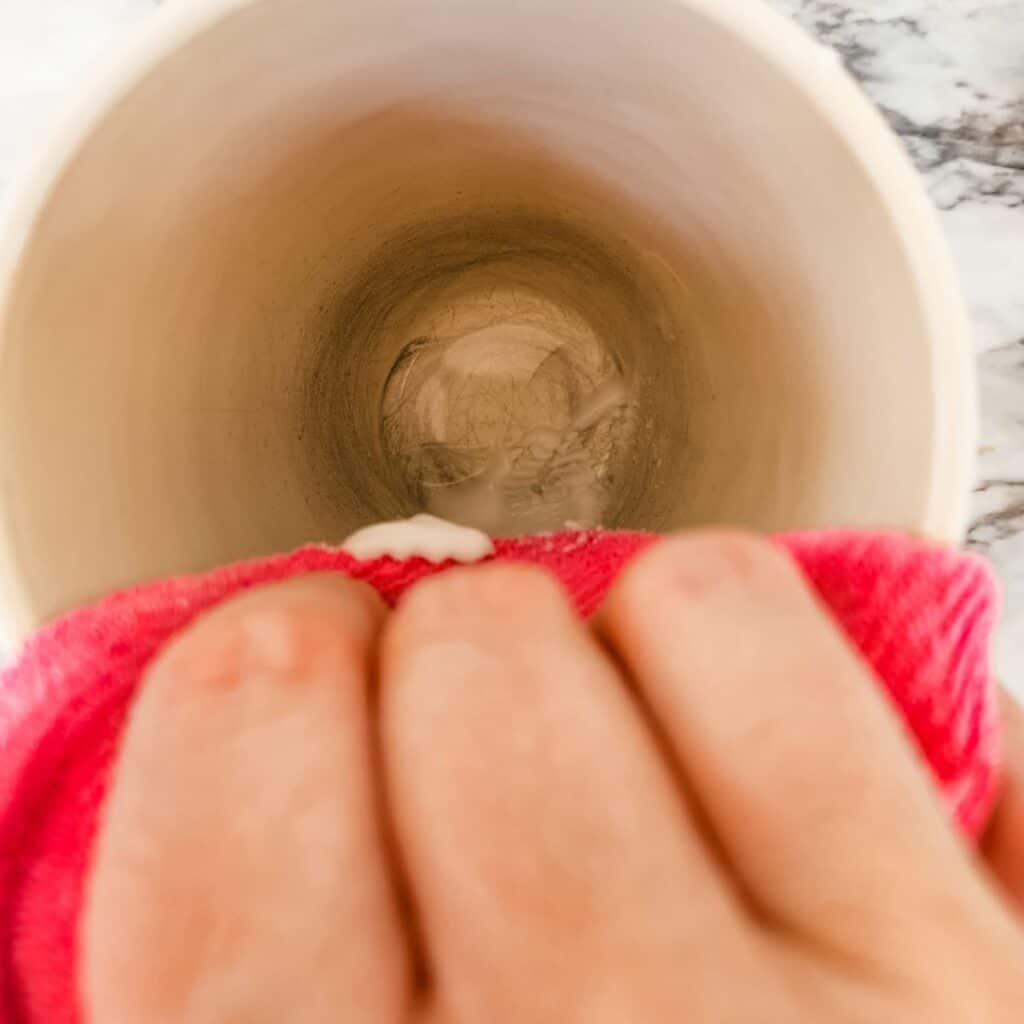
Lightly scrub with a paper towel or sponge.
Use a paper towel or a sponge to scrub the paste around the cup. You should be able to tell by now if the stains are gone. If the coffee stains aren't gone, let the paste sit for another 5 minutes and then scrub again.
Rinse well.
When the stains are all gone rinse the cup removing any baking soda and hydrogen peroxide and wash as you normally would.
It only takes a few minutes, but those dingy, stained coffee mugs can once again look new and white.
Easily remove coffee stains from mugs with this simple tip!
While you are cleaning your mugs, don't forget to maintain your Keurig machine.
Common FAQs
Because our paste calls for 2 safe ingredients, you can use this technique to remove coffee and tea stains from stainless steel mugs, ceramic, glass, and plastic.
Yes, Magic Erasers can be effective at removing coffee stains from certain surfaces.
Magic Erasers are made of melamine foam and work by gently abrading the surface to remove stains and grime. They don't contain any chemicals or abrasive agents, so they're generally safe to use on a variety of surfaces.
However, when it comes to stained mugs and cups we normally just use our 2 ingredient paste and it works wonders!
To use a Magic Eraser to remove a coffee stain, follow these steps:
Wet the Magic Eraser with water.
Gently rub the Magic Eraser over the coffee stain, applying slight pressure.
Continue to rub until the stain has been removed.
Rinse the area with water to remove any residue.
Note that Magic Erasers may not be suitable for all surfaces. They're particularly effective on hard, non-porous surfaces like porcelain, tile, and glass. However, they may damage or scratch delicate surfaces like wood or painted surfaces.
It's always a good idea to test a small, inconspicuous area first to make sure the Magic Eraser won't damage or discolor the surface.
Improper loading: If the cups are placed upside down or the dishwasher is overcrowded, it may prevent the water and detergent from reaching all areas of the cup, leading to stains. Make sure that the cups are loaded properly and there's enough space between them for the water and detergent to circulate.
Hard water: If your home has hard water, it can cause mineral buildup on the cups, leaving them stained even after washing. Consider using a dishwasher detergent that's formulated for hard water or adding a rinse aid to help prevent mineral buildup.
Old or expired detergent: If you're using an old or expired dishwasher detergent, it may not be effective at removing stains. Make sure to use a fresh and effective dishwasher detergent.
Age or quality of cups: Over time, cups may become more prone to staining due to their age or quality. If the cups are old or made of a porous material, they may be more difficult to clean and may become permanently stained.



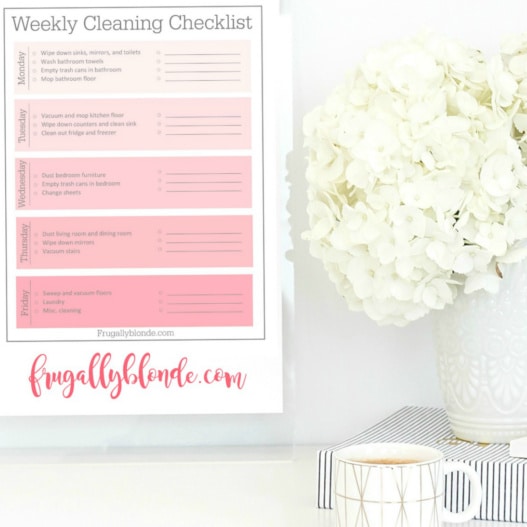
Terri says
I don't have baking powder so I tried bicarbonate of soda, a little water and a cloth to wipe inside the cup...it worked beautifully and instantly no making a paste, no waiting for 10-15mins!
Julie says
That's great to hear! Thank you for sharing!